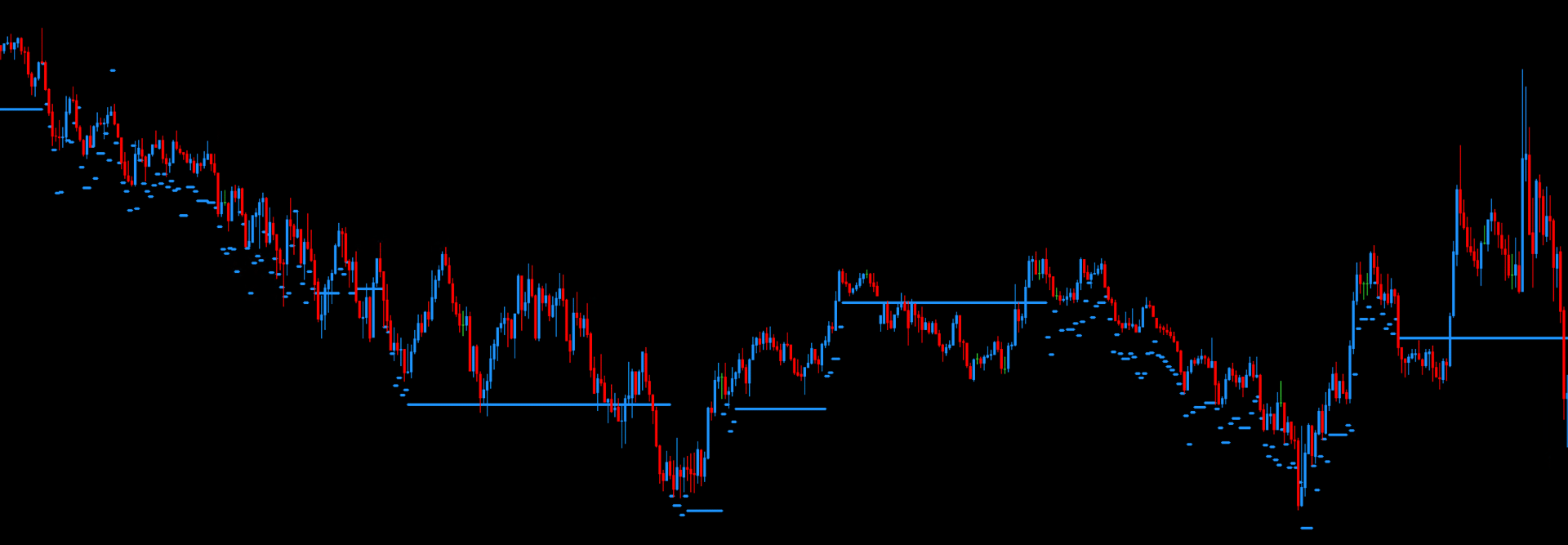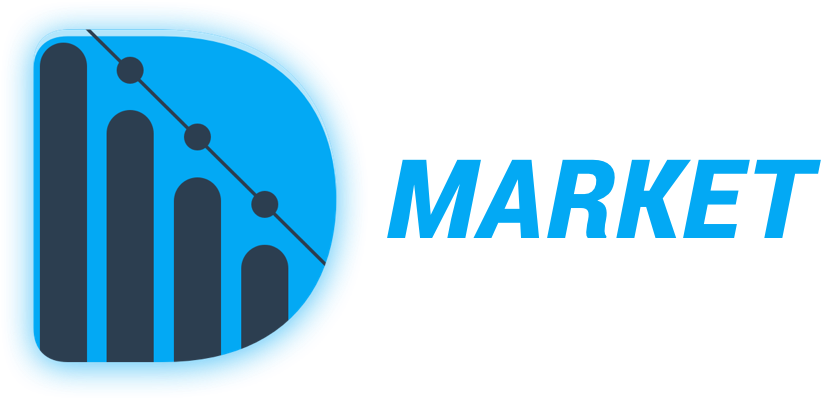
USDCAD
The USDCAD currency pair combines the United States dollar (USD), the official currency of the United States, with the Canadian dollar (CAD), the currency of Canada. USDCAD is one of the major currency pairs in the Forex market, often referred to as the "loonie," a nickname derived from the image of the loon on the Canadian one-dollar coin. Canada is one of the world's largest producers and exporters of commodities, particularly crude oil. Consequently, the Canadian dollar is considered a commodity currency, and its value is closely correlated with energy commodity prices. The US dollar, as the global reserve currency, plays a pivotal role in international finance and trade.

Characteristics and Specifics
- Commodity Prices, Especially Crude Oil: Canada is a major supplier of crude oil to the United States. An increase in oil prices typically strengthens the CAD, potentially causing the USDCAD exchange rate to fall. Conversely, a decrease in oil prices can weaken the CAD and strengthen the USD in this pair.
- Monetary Policy: Decisions by the U.S. Federal Reserve (Fed) and the Bank of Canada (BoC) regarding interest rates and monetary policy directly impact the USDCAD exchange rate. Interest rate differentials between the U.S. and Canada can influence capital flows and the attractiveness of investments in both countries.
- Macroeconomic Data: Releases of economic indicators such as GDP, inflation rates, unemployment figures, retail sales, and trade balances from both countries affect perceptions of the strength of their economies and thus the value of USD and CAD.
- Trade Relations: The U.S. and Canada are close trading partners, and changes in trade agreements, tariffs, or customs policies can affect the USDCAD exchange rate. Agreements like the USMCA (successor to NAFTA) are significant for both economies.
- Global Market Sentiment: During times of global uncertainty, the US dollar is often perceived as a safe-haven currency, which can lead to USD appreciating against the CAD.
Summary
USDCAD is a currency pair that offers traders diverse opportunities due to the influence of commodity, economic, and political factors. Understanding the correlation between the CAD and crude oil prices is crucial for effectively trading this pair.
- Crude Oil Prices: Keep track of global trends in the oil market, which have a direct impact on the value of the CAD.
- Monetary Policy: Observe decisions by the Fed and BoC regarding interest rates and other monetary policy tools.
- Economic Data: Analyze macroeconomic releases from both countries to anticipate potential exchange rate movements.
- Political and Trade Events: Monitor changes in trade relations between the U.S. and Canada and other significant political events.
USDCAD can be attractive to both short-term traders, leveraging volatility resulting from economic data and commodity prices, and long-term investors analyzing fundamental economic trends in both countries.

Example DML levels:
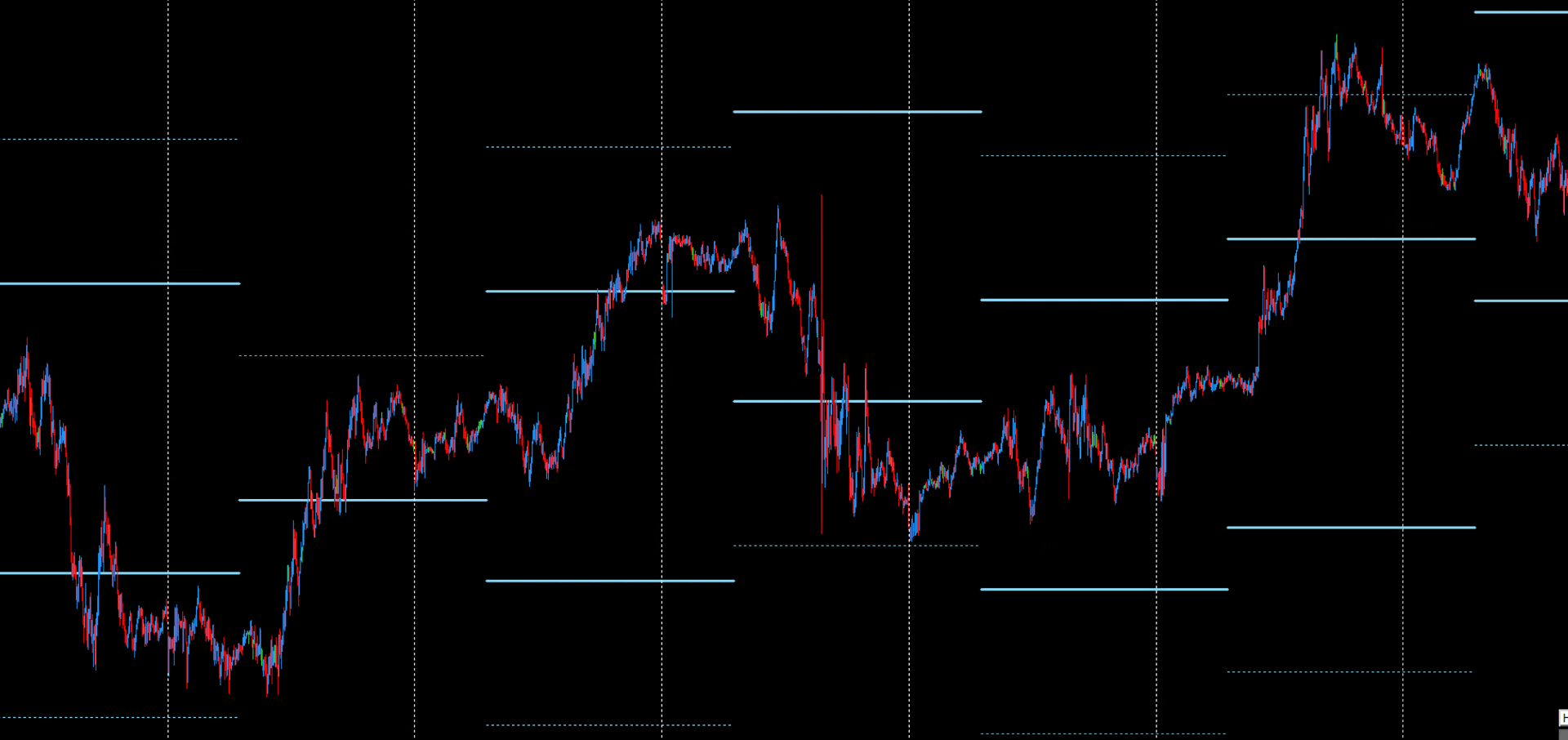
SkyBlue - Daily Support & Resistance
The SkyBlue levels are daily support and resistance levels published around 6:00 AM GMT. These levels are determined based on liquidity flow analysis and key market data, serving as a tool for identifying short-term price movements.
You can find more about SkyBlue levels here.
Red - Weekly Support & Resistance
The Red levels are weekly supports and resistances. They appear on the chart on Wednesday afternoons and remain valid for the following week. Red levels consist of a total of six horizontal lines: three above the price and three below. The main Red levels, known as RedEx, are located at the extreme positions - both at the bottom and top. Approximately one-quarter of the distance between the lower and upper RedEx levels, the Red levels create a zone marked by two bold lines, both above and below the price.
You can find more about Red levels here.
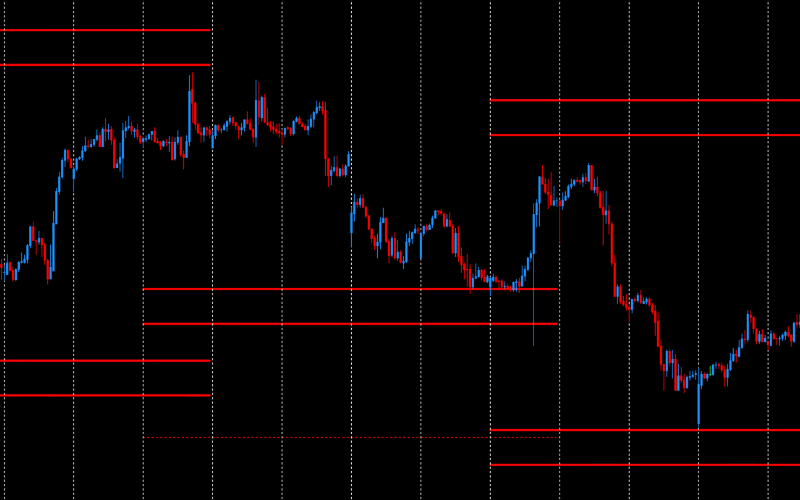
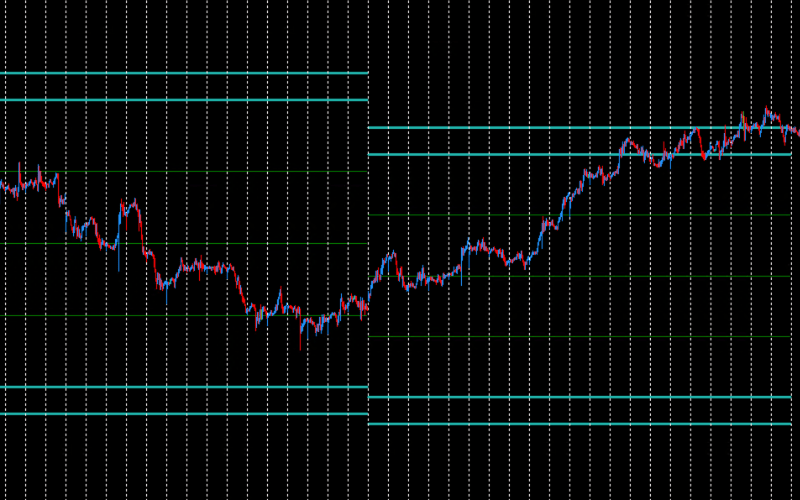
SeaGreen - Monthly Support & Resistance
SeaGreen levels are monthly supports and resistances set at the beginning of each calendar month. The price rarely reaches these levels, but when it does, it usually either changes direction long-term or consolidates at that level. This makes it an ideal level for investors and traders who position their trades over a longer time frame.
You can find more about SeaGreen levels here.
DarkOrange - precise price reactions
DarkOrange levels are closely linked to Violet levels, which are updated every hour, unlike DarkOrange levels, which are updated every 5 minutes. Both the data sources and calculation algorithms are identical. However, the more frequent 5-minute recalculations for DarkOrange levels have allowed the discovery of unique setups and models, as well as the observation of many anomalies unavailable for trading on Violet levels.
You can find more about DarkOrange levels here.

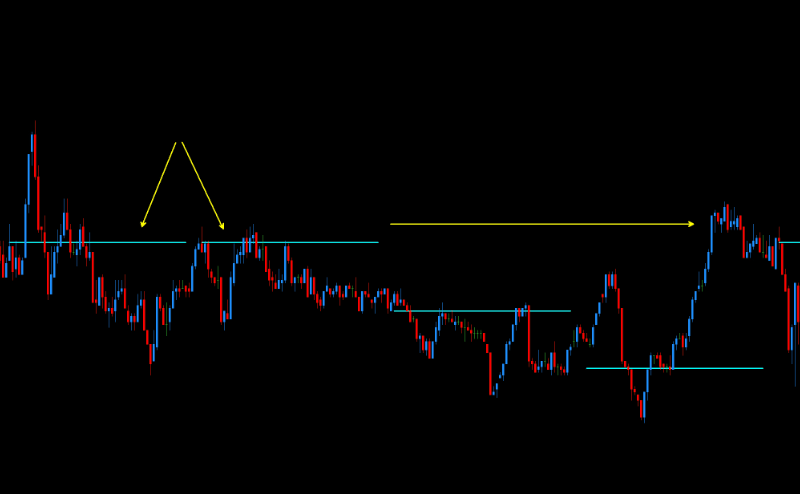
Aqua - DML Floating Levels
Aqua levels, similar to Violet levels, are retrieved every hour, although their characteristics are quite different. Violet levels, for reference, typically hold one level throughout most of the day, then shift to a new level in the evening after the Flow Zone (FZ). In contrast, Aqua levels usually appear near the current price level.
You can find more about Aqua levels here.
Olive - Daily Support and Resistance
Olive levels are generated once a day, around 19:00 GMT. This level consists of three zones. The middle zone is located around the price level at 19:00 GMT. The other two zones are located above and below the middle zone, at equal distances from it. The range of these distances varies daily and indicates the potential movement dynamics for the next day. The lower zone is a very strong support for the next trading day, while the upper zone is a strong resistance for the next trading day.
You can find more about Olive levels here.

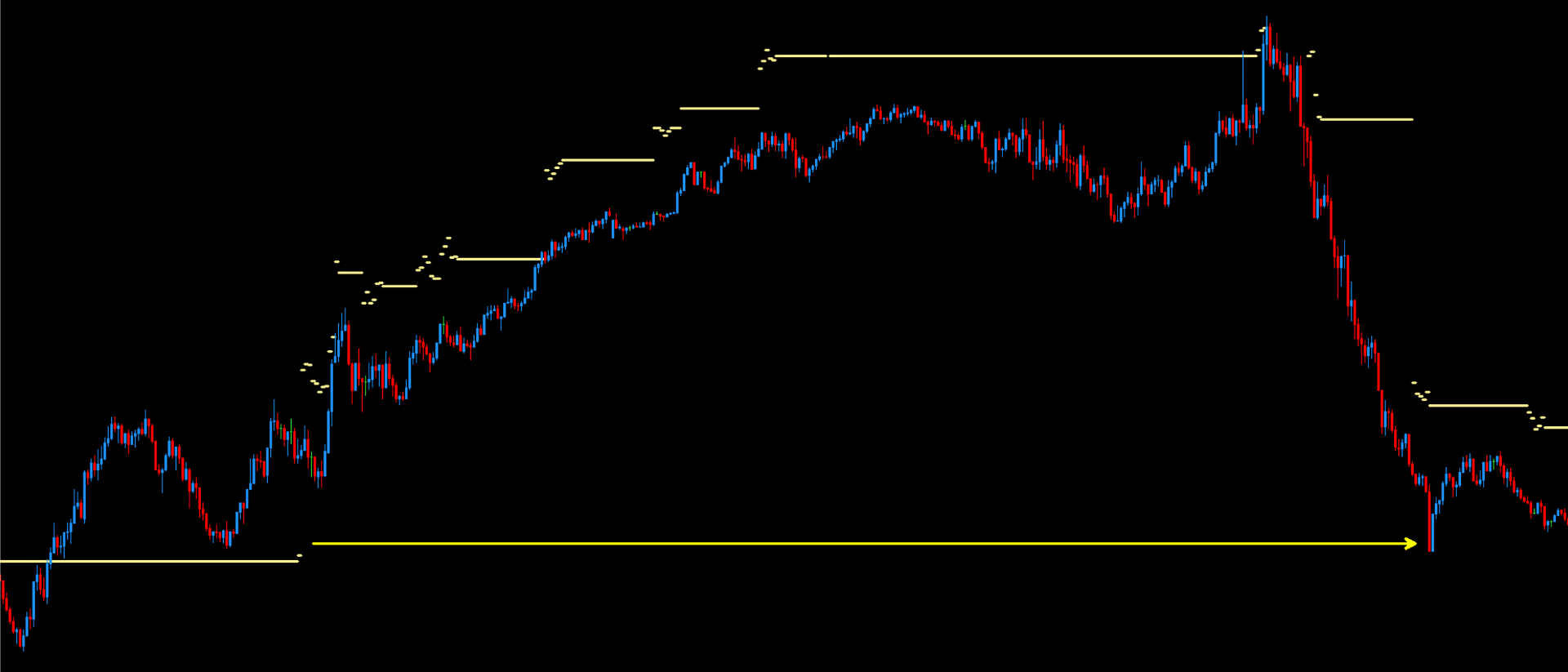
Khaki – Dynamic Supports and Resistances
Khaki levels on EURUSD are key resistance levels that play an important role in trading this currency pair. Exceeding the zone defined by these levels suggests that the price should return to them. Particularly important is the zone between the last Flow Zone (FZ), which appears in the morning, and 11:00 AM GMT. Levels ending after 12:00 PM GMT are also settled, but experience shows that treating Khaki levels as resistances until 11:00 AM is safer and has significantly better repeatability. The repeatability of returns to these levels is over 90%.
You can find more about Khaki levels here.
DodgerBlue - Completed DML Levels
DodgerBlue levels, offered by DeepMarketLevel.com, are a unique tool for analyzing the forex market. Their distinctiveness lies in precisely identifying key price levels that statistical models recognize as significant for price movements within specific timeframes.
You can find more about DodgerBlue levels here.
